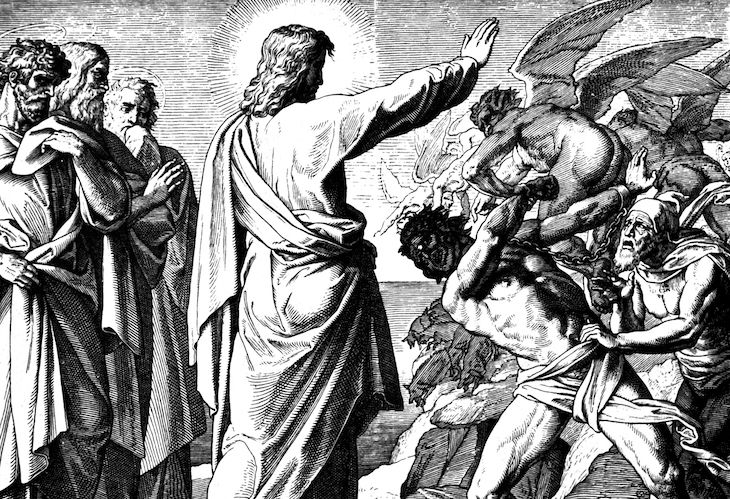As well as writing about religion, I have always been an amateur religious artist. Recently I’ve been getting a bit more serious about it, and have made a few art works for churches. I recently created one for a City of London church. The vicar, a friend, suggested it might appeal to youngish people somewhat at odds with conventional church (his church hosts such a group). I made a large fabric collage depicting an exorcism: Jesus casting out a demon. I said a few words at its unveiling, which seemed to go well.
But not everyone was happy. A few weeks later the vicar told me that the picture had been taken down, following a complaint. Well, my slapdash neo-primitive style is not for everyone, I conceded, a bit baffled. No, he said, this person felt very uncomfortable due to the anti-LGBT associations of exorcism. She thought that this was a community in which she could feel safe — and she had brought her girlfriend to a service hoping to show her how welcoming it was —and instead this slap in the face: an art work that seemingly celebrates the toxic practice of ‘deliverance’ used by anti-gay fundamentalists. The experience had so shaken and shocked her that she was losing sleep, she told someone else at the church, who passed on the information to the vicar.
I was expecting a few hurdles in my new side career of religious artist. But this was unexpected: to be accused of persecuting homosexuals, on account of having attempted to depict the theme of exorcism. Isn’t exorcism in the Bible, I asked the vicar? Would she like Jesus’s exorcisms to be snipped from the gospels? He agreed that her complaint was theologically shaky, but said that we are living in a rising climate of sensitivity, including in the churches.









Comments
Join the debate for just £1 a month
Be part of the conversation with other Spectator readers by getting your first three months for £3.
UNLOCK ACCESS Just £1 a monthAlready a subscriber? Log in